The contents of my last two postings have been quite dark. Let’s take a 90-degree turn this week and look at some lighthearted stuff, something that I came across purely by chance and put a smile on my face.
The SAT vocabulary of the day: 해학 (hae-hak, 諧謔)
If you’re old enough to have taken the SAT when there used to be the Vocabulary section, you’d probably remember this “SAT Word of the Day” thing. I’ve made reference to the “SAT Vocabulary” because hae-hak is a difficult word, something you would very rarely use in everyday conversations but something that would show up in scholarly writings.
It means, “humor, wit.” Not slapstick humor, nor physical comedy, in-your-face type of humor, but cutting, poignant, sarcastic, cerebral humor. You could say that Monty Python was built on hae-hak.
With that established, let’s take another 90-degree turn and google “best selling spirit in the world” and see what comes up.
I bet you didn’t know that. The best-selling spirit in the world is the Korean spirit 소주 (soju, 燒酒). On the top 10 list, there are two Korean soju brands, 1 is Jinro (진로, owner of 참이슬 brand) and 7 is Chum-churum (처음처럼). I don’t know whether I should be proud or embarrassed.
This is a little misleading because the soju bottles are small at 375ml, slightly bigger than a can of Coke. Soju is also cheap. If you buy it at any market (in Korea), it’s about 2,000 KRW (~ $1.50 USD), and if you order it at restaurants/bars, it will set you back about 5,000~6,000 KRW (less than $4.50). BTW, it’s north of $12 in LA restaurants.
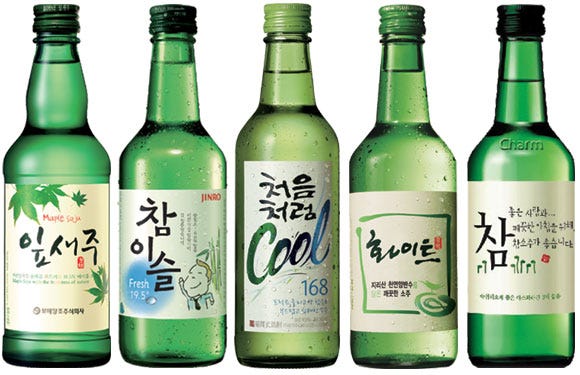
But suffice it to say that Koreans heavily consume this stuff (and I’ve seen A LOT of non-Korean folks in LA drinking this also). Depending on the brand, the alcohol content is between 16~19% by volume. It’s stronger than you’d think, but my dad says he doesn’t like soju these days because they’re bland—in his day, soju used to be 30~35% alcohol.
OK, let’s make yet another 90-degree turn and now talk about the National Museum of Korea (국립중앙박물관). One of the things I keep promising myself to visit whenever I’m in Seoul is the National Museum and I always forget. I missed it again this time, ugh…

The Museum runs an independent goods/gift shop online—appropriately named MU:DS.
I was browsing through it and noticed…
… that there is one item that’s been sold out. And it’s been sold out as soon as it hit the market, evidently. Now they’re taking **reservations** to be able to purchase this product. Hmm… Got me curious.
It is a set of 3 soju shot glasses for 26,000 KRW (~$20), with some drawing on it. Okay, cute…
On the back of the tag, it says, “Pour cold drink in here. The man’s face will turn red and flowers will bloom.”
Ahh… I get it. You drink soju, and you get inebriated, Joseon style.
Last year in one of my postings, I talked about Shin Yoon-bok, one of the two most famous artists from the Joseon dynasty. Who’s the other one, you ask? His name is Kim Hong-do (김홍도). In 평안감사향연도, a series of 3 separate paintings depicting the festivities hosted by the Governor of Pyong-an Province (surrounding Pyongyang in North Korea) that’s housed at the National Museum, Kim left us something that’s tantamount to photographic records of what things were like 200 years ago.
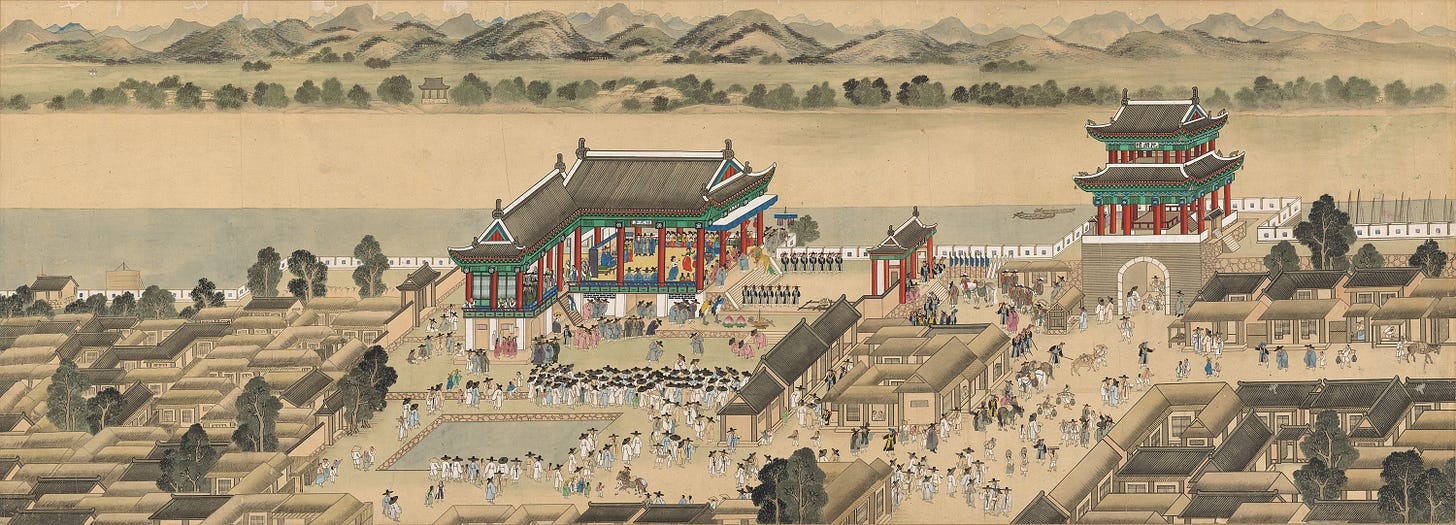
The main elements of these 3 huge paintings, 2 meters wide (6 ft 7 in), are of course the Governor’s banquet scenes, but there are details in them that allow us to glance into the lives of the common folk. For instance, there are scenes of commerce, sellers of water, children peddling traditional Korean candy made out of malt called 엿 (yeot—don’t try to use Google Translate on this word, and because I said so, I know you will), kids in trees looking at the female performers, lower nobility class people trying to somehow get into the festivities, guards preventing them—too many to count details into the realities of the time.
In Where’s Waldo? style of poring over the paintings, you come across these three separate instances of drunk people. Look familiar?

This is precisely what I tried to convey the meaning of when I brought up the word hae-hak, the Joseon/Korean sense of humor reborn in the 21st century in the form of shot glasses. Frankly, I don’t know of any Korean person who wouldn’t want to have a set of these, even if they don’t drink.
Perhaps I should write about Kim Hong-do later—he’s a very intriguing character.






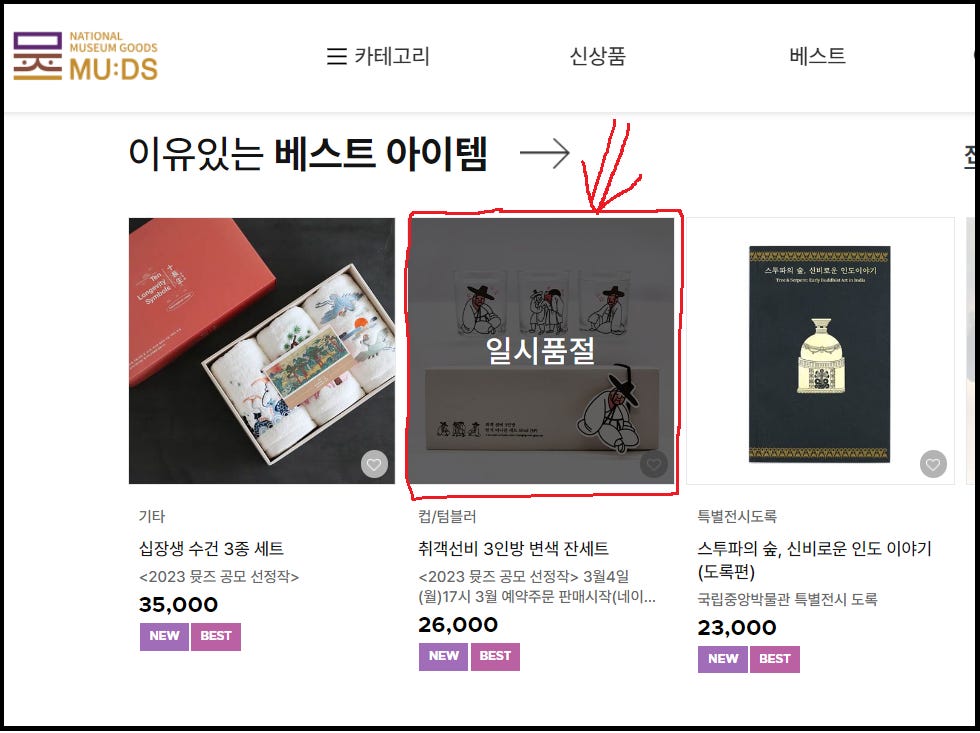
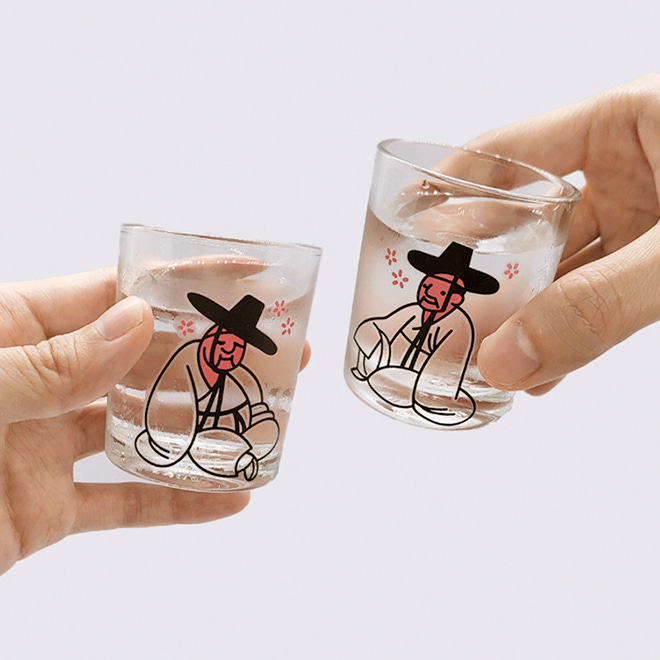
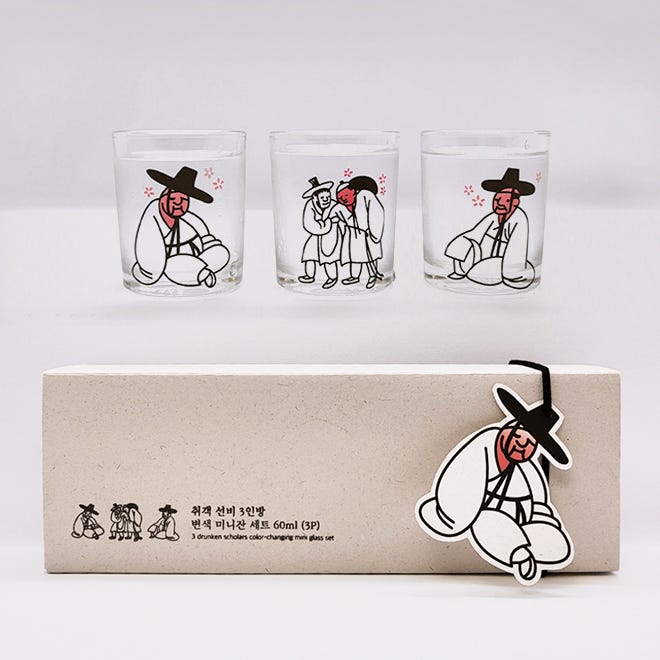
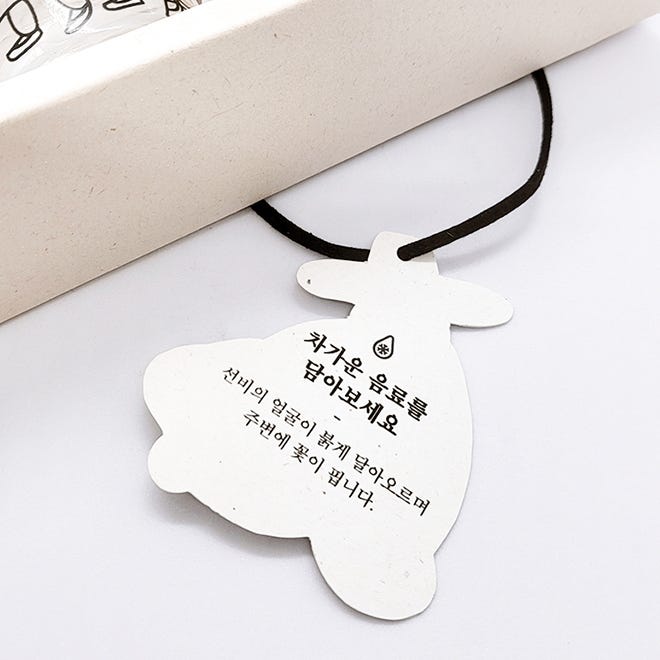
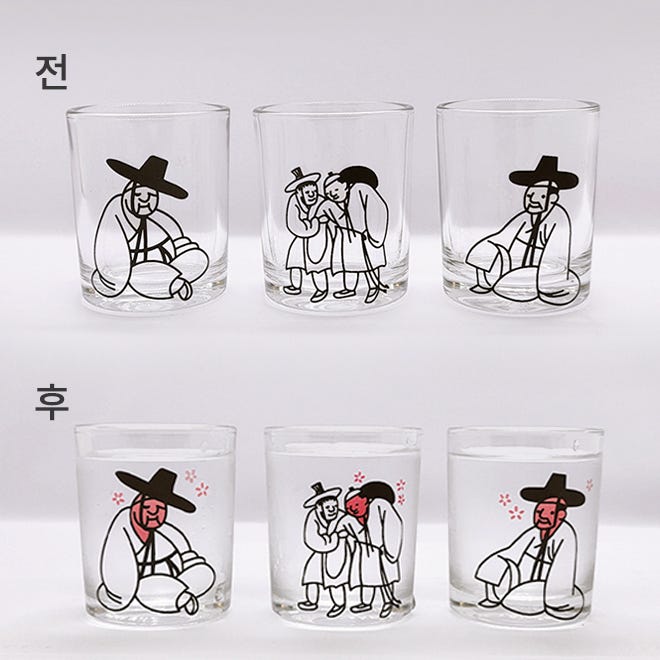
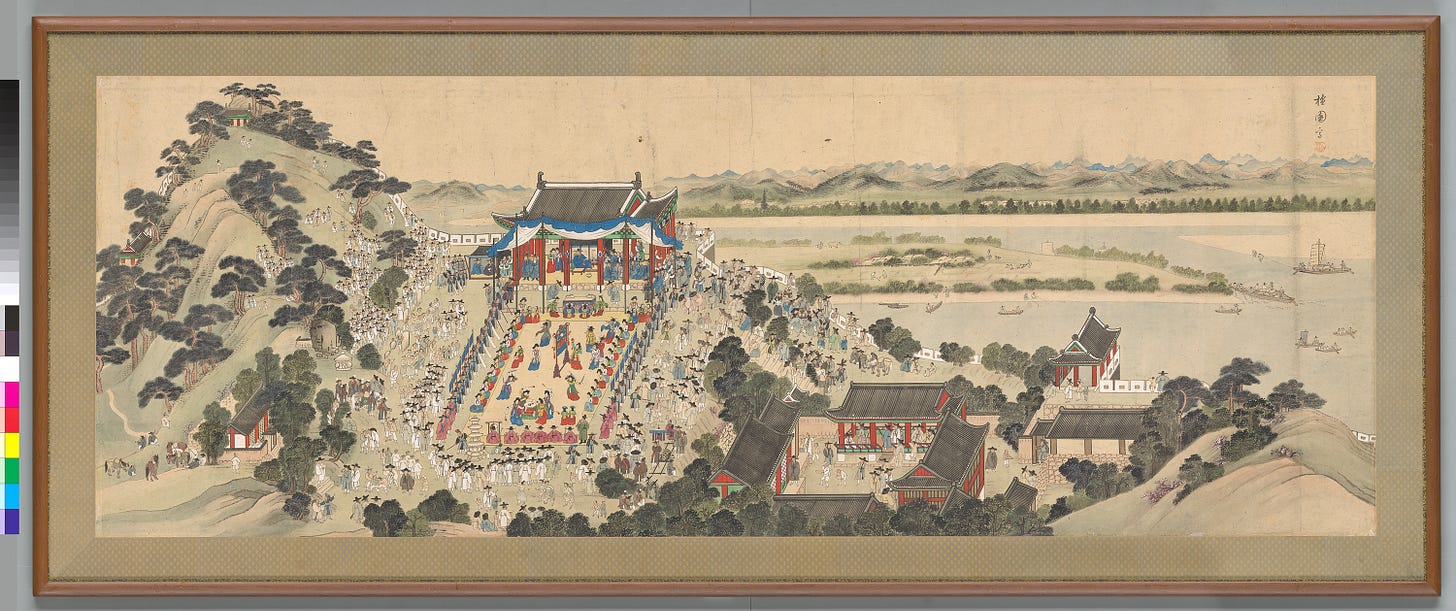
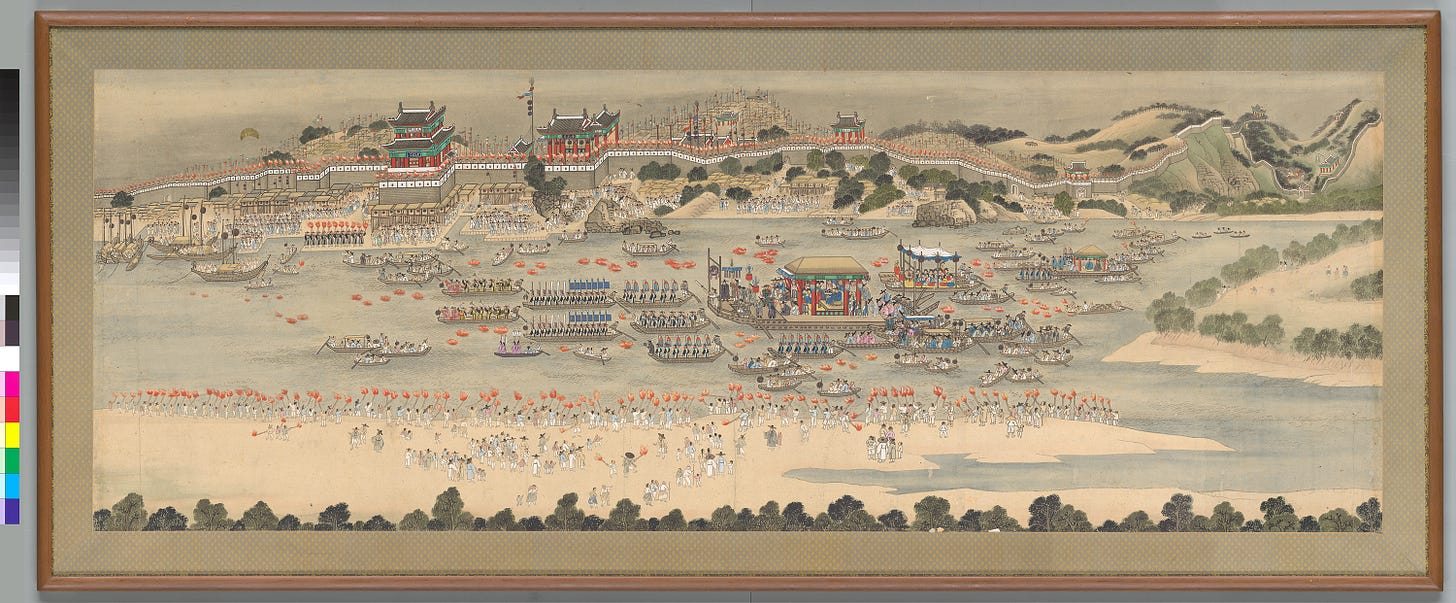

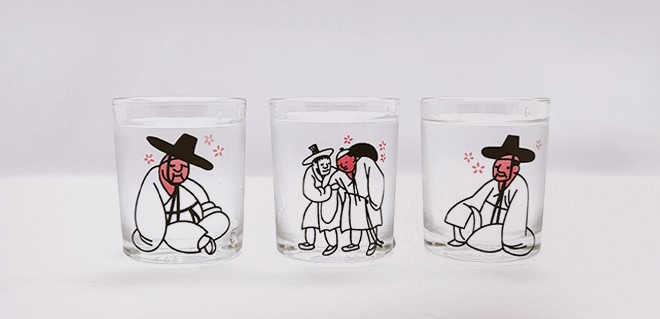
The chill faced glasses are funny. My question is not about hae-hak though but about drinking habits. In Korea, is there a good substitute if one does not drink alcohol? (I suppose iced/hot tea and iced/hot coffee/Americano are possible substitutes) If you don't drink alcoholic beverages, are you looked down upon? Is the water good in Korea?
The art work in your link is great. 그리고 박물관 입구 is beautiful lit up at night.